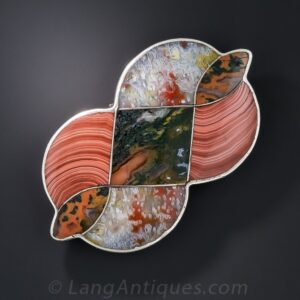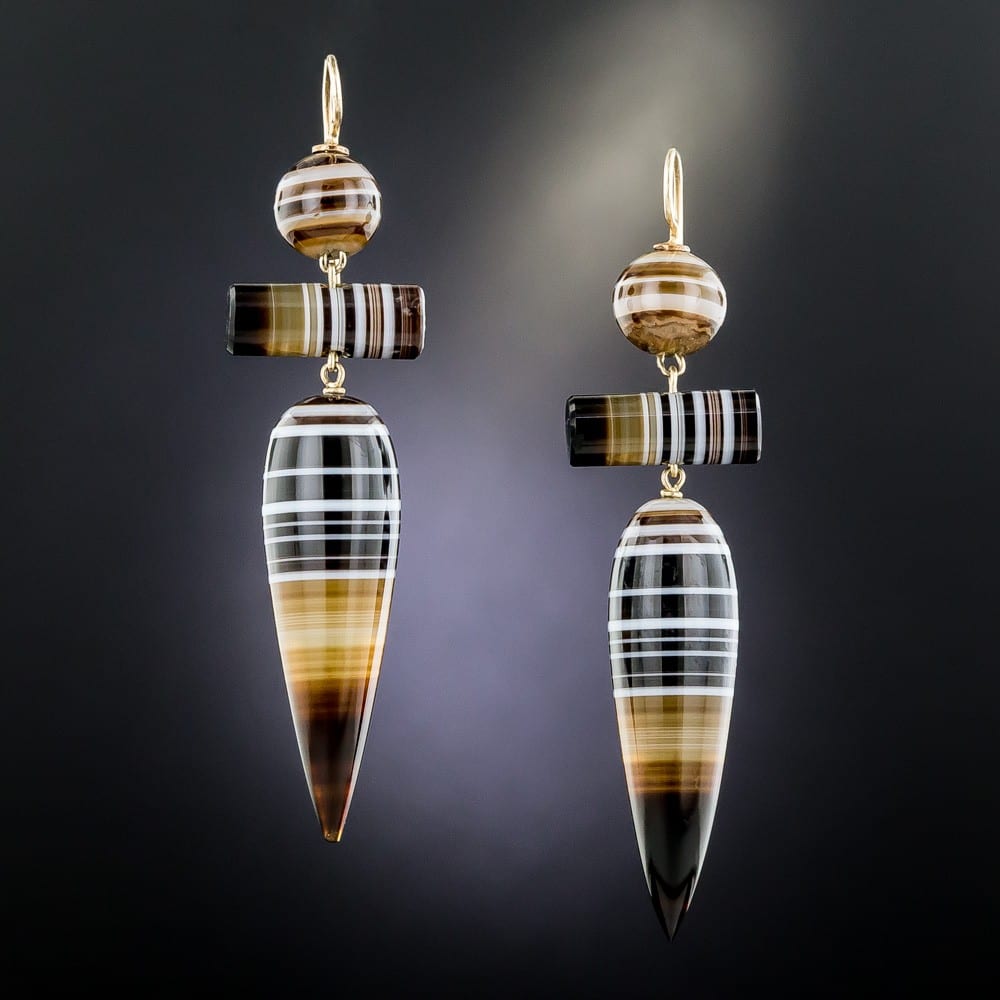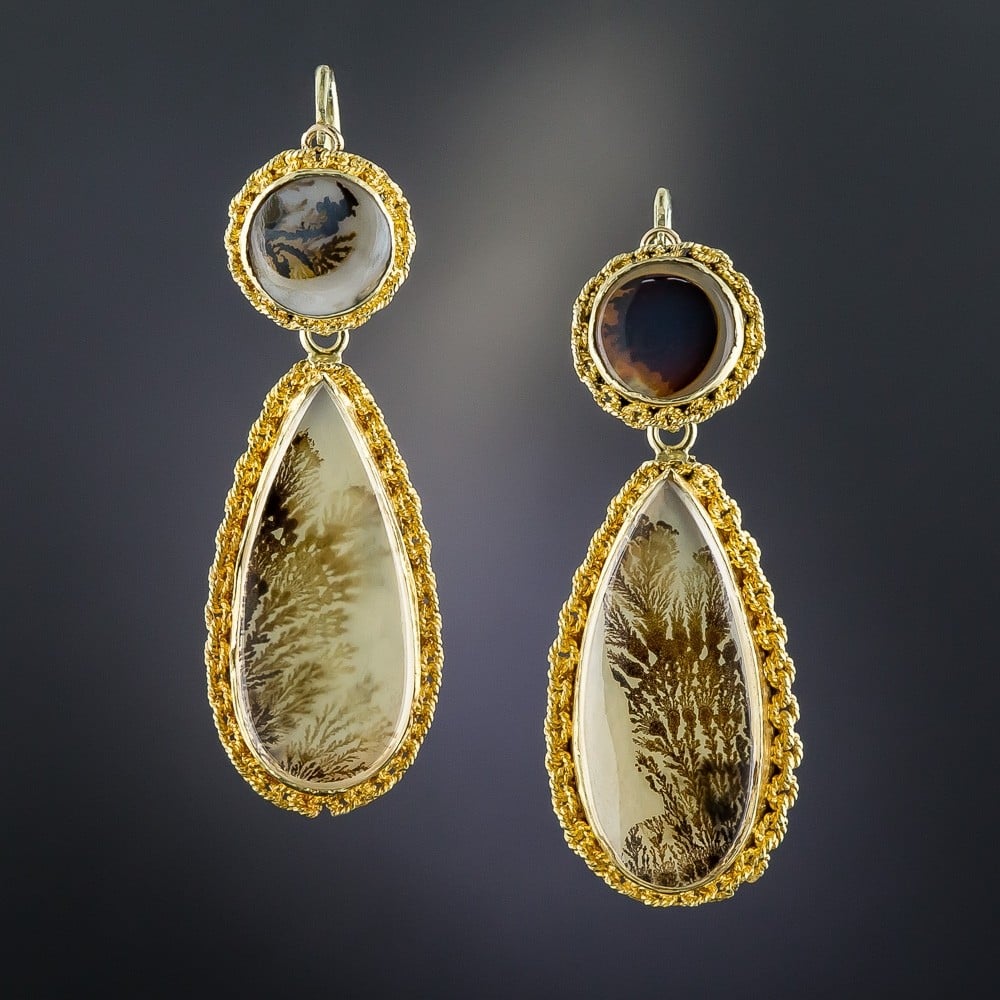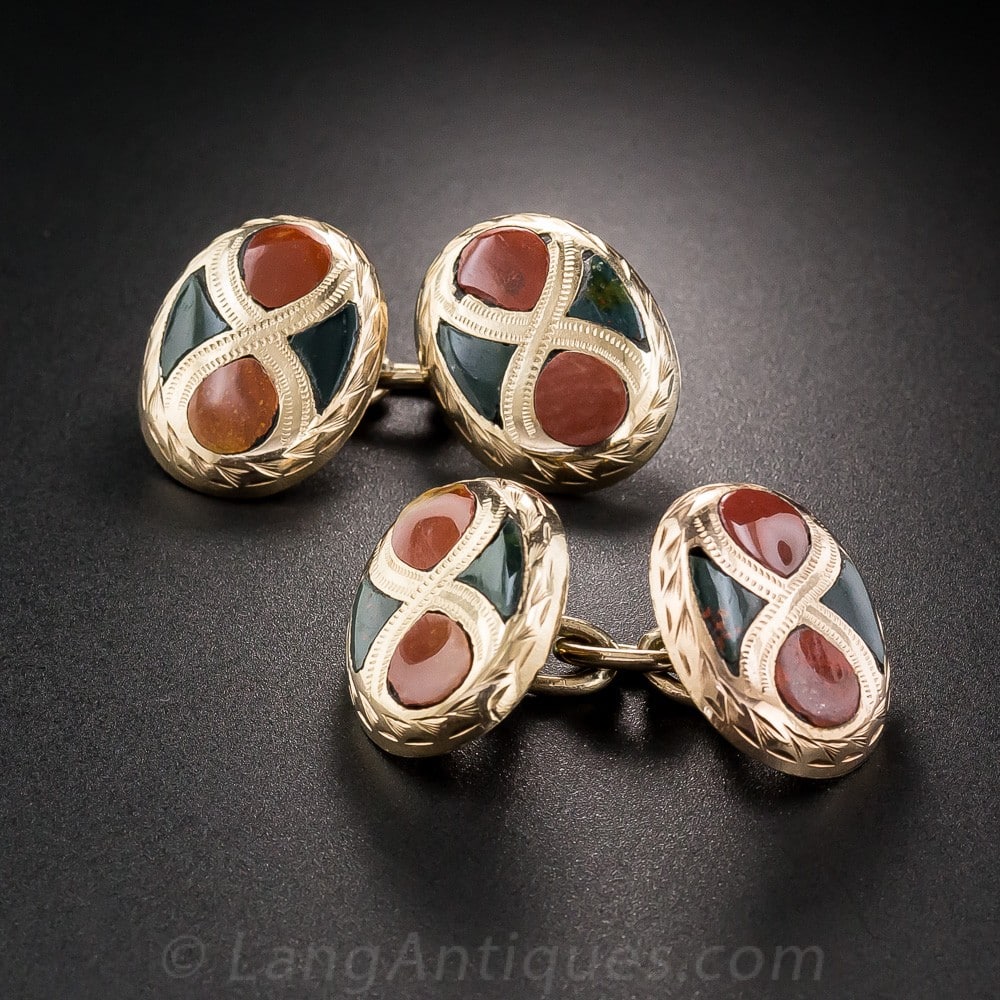
Agate is a variety of chalcedony found in many different colors and degrees of translucency. There are several varieties of agate named after their location of origin or physical characteristics. The layers of agate form as layers of chalcedony line a cavity (or vug) in a host rock.
The banding that characterizes agate has made it the perfect medium for the carving of cameos and intaglios. Cameos are most often carved with the white layer in relief, while in intaglios, the figure is engraved into the darker layer to expose the light layer below.
A Brief History of Agate
In Egypt, grey agates were often worn around the neck to protect against and heal stiff necks. Ancient Romans believed moss agates to have “divine” power. Ingredients for lotions and ointments were ground on moss agate as it was believed to have the power to improve one’s disposition as well as one’s eyesight.
In Persia and Asia, agates had been used as an anecdote for fevers. They were placed in the mouth to relieve thirst and reduce one’s temperature. The Book of Saxon Leechdoms written in 1864 writes that agate prevents harm from thunder, sorcery, demonic possession, poison, and drunkenness.
During the reign of Queen Victoria, Scottish agate jewelry became the height of fashion. Lovely examples of these Victorian agate jewels are coveted by collectors today.



Agate Gemological Information
| Color: | All Colors |
| Crystal Structure: | Polycrystalline |
| Refractive Index: | 1.53-1.54 |
| Durability: | Excellent |
| Hardness: | 6.5 |
| Family: | Quartz |
| Similar Stones: | Chrysoprase, Jasper, Carnelian, Bloodstone, Onyx |
| Treatments: | Dyeing |
| Country of Origin: | Agate is Found Throughout the World |
Agate Care
| Ultrasonic Cleaning: | Not Safe |
| Steam Cleaning: | Not Safe |
| Warm Soapy Water: | Safe |
| Chemical Attack: | Sensitive to chemical attacks |
| Light Sensitivity: | None |
| Heat Sensitivity: | Sensitive to Thermal Shock |